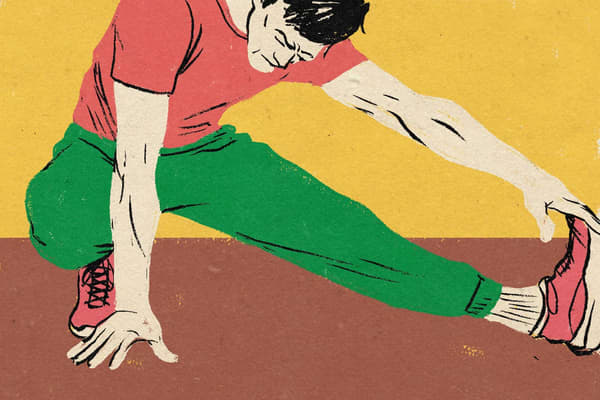Is Running Really That Bad for Your Knees?
Sport & Activity
Contrary to popular belief, running isn't all that bad for your knees. But if you do experience knee pain, there are a few factors that may be to blame.

If you've ever experienced knee pain during or after a run, it may have led you to ask "Is running bad for my knees?" The truth is running can be beneficial for joint health, but there are a few caveats.
Your running form, mileage and shoes, as well as your overall health and fitness level, influence how your knees respond to a run. Here's what that means for your joints—and how you can eliminate knee pain while running.
Causes of Knee Pain While Running
As each stride lands on the ground or treadmill during a run, your feet are the first point of contact. They're responsible for absorbing and dispersing the impact, which is equal to three to four times your body weight.
This high-impact exercise places stress on your knees. But this stress doesn't make running bad for your knees. What causes most knee pain and injuries is overtraining, incorrect shoes, poor technique or pre-existing conditions that increase your susceptibility.
Injuries like runner's knee, iliotibial band syndrome (ITBS), stress fractures and patellofemoral pain syndrome are caused by overuse—training too frequently or intensely without sufficient recovery.
You can run regularly, multiple days a week, but it's something you build up to. Beginners should start by running once or twice a week, with plenty of rest and active recovery in between sessions. More experienced runners can increase this volume, but it's still important to get adequate recovery between runs to prevent knee pain or injury.
During recovery, inflammation is regulated and the damage to muscles is repaired. Over time, your muscles get stronger and better equipped to handle the repeated stress of running. This allows them to support and cushion the joints more effectively, reducing the risk of injury.
Running Form for Healthy Knees
The way you run can greatly affect how your knees respond. Follow these tips to avoid knee pain and injury caused by improper running form:
- Avoid Overstriding: taking too large a stride forces your leg to straighten. As you land, your knees aren't bent and are less able to absorb the impact. Instead, take shorter strides and allow your knees to bend with each stride.
- Watch Foot Strike: supination is the outwards roll of your foot upon impact. It can be caused by naturally high arches or poor running technique and is a common cause of knee pain. Overpronation (excessive inwards roll) can also lead to knee pain. When your arch collapses, your knees and adductor muscles rotate inwards, irritating the hip joint and kneecap.
- Land on Your Midfoot: a heelstrike increases stress on the patellofemoral joint, increasing your risk of knee injury or pain, according to a 2015 study in Medicine and Science in Sports and Exercise. So aim to land on your midfoot.
- Wear the Right Running Shoes: you need running shoes with sufficient cushioning to help absorb the impact so there's less pressure on your knees. And if you overpronate, look for running shoes with arch support to help fix hip and knee rotation.
Bad Knees: When to Avoid Running
If you start a run and experience knee pain, stop. Unlike some running injuries like shin splints that can be worked through, attempting to run with bad knees can lead to injury.
Missing a run can be hard, but taking one day (or even a few days) off may save you from developing an injury that can take you out of the running game for months. And if your knee pain doesn't go away or gets worse, schedule an appointment with your doctor to have it examined.
People with certain joint conditions like knee osteoarthritis should avoid running and try other lower-impact forms of cardio like walking, aqua jogging, or using an exercise bike or elliptical.
The Benefits of Running for Joint Health
The joint-health benefits of staying physically active are well established:
- Building muscle mass helps counteract age-related muscle loss, according to a 2011 study in Cell Metabolism.
- Exercise helps you build and retain bone density, according to a 2018 study in BioMed Research International.
- Exercise is linked to better joint mobility, even for those with chronic joint conditions, according to a 2011 study in the Journal of Aging Research.
- Regular exercise helps maintain a healthy body weight, keeping excess pressure off your joints.
- Running reduces inflammation in the knee joint, according to a 2016 study in the European Journal of Applied Physiology.
- Running has a protective effect on the knees, causing the bone and knee cartilage to adapt and strengthen, according to a 2020 study in PeerJ.
For expert-driven tips on how to strength-train properly, consider downloading the Nike Training Club App.





